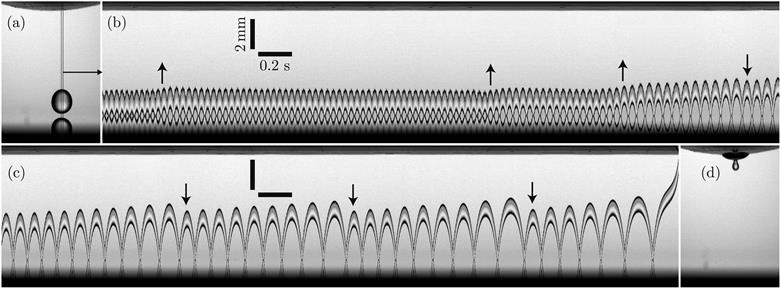Scientists uncover why charged droplets on a hot surface bounce progressively higher.

Source: © Royal Society of Chemistry
Dynamics of an ethanol Leidenfrost droplet in an electric field. The total time covered by (b) and (c) is about 9 seconds
Researchers from the Netherlands and China have discovered that they can make small droplets dribble on a hot surface like a bouncing ball by applying an electric field. Changes in the droplet’s mass and charge over time make it bounce progressively higher, seemingly defying gravitational attraction.
Inspired by a video showing droplets orbiting a charged knitting needle at the International Space Station, Sander Wildeman from the University of Twente and Chao Sun from Tsinghua University wanted to investigate how charged droplets behave in a strong electric field. ‘Gravity is a problem on Earth, and we wanted the droplets to move without friction as they do in space,’ explains Wildeman. This is why they decided to do their investigation on Leidenfrost droplets, which move with very little friction.
Read the full story by Liisa Niitsoo in Chemistry World.
This article is free to access until 16 January 2016.
Sander Wildeman and Chao Sun, Soft Matter, 2016. DOI: 10.1039/C6SM01506A










